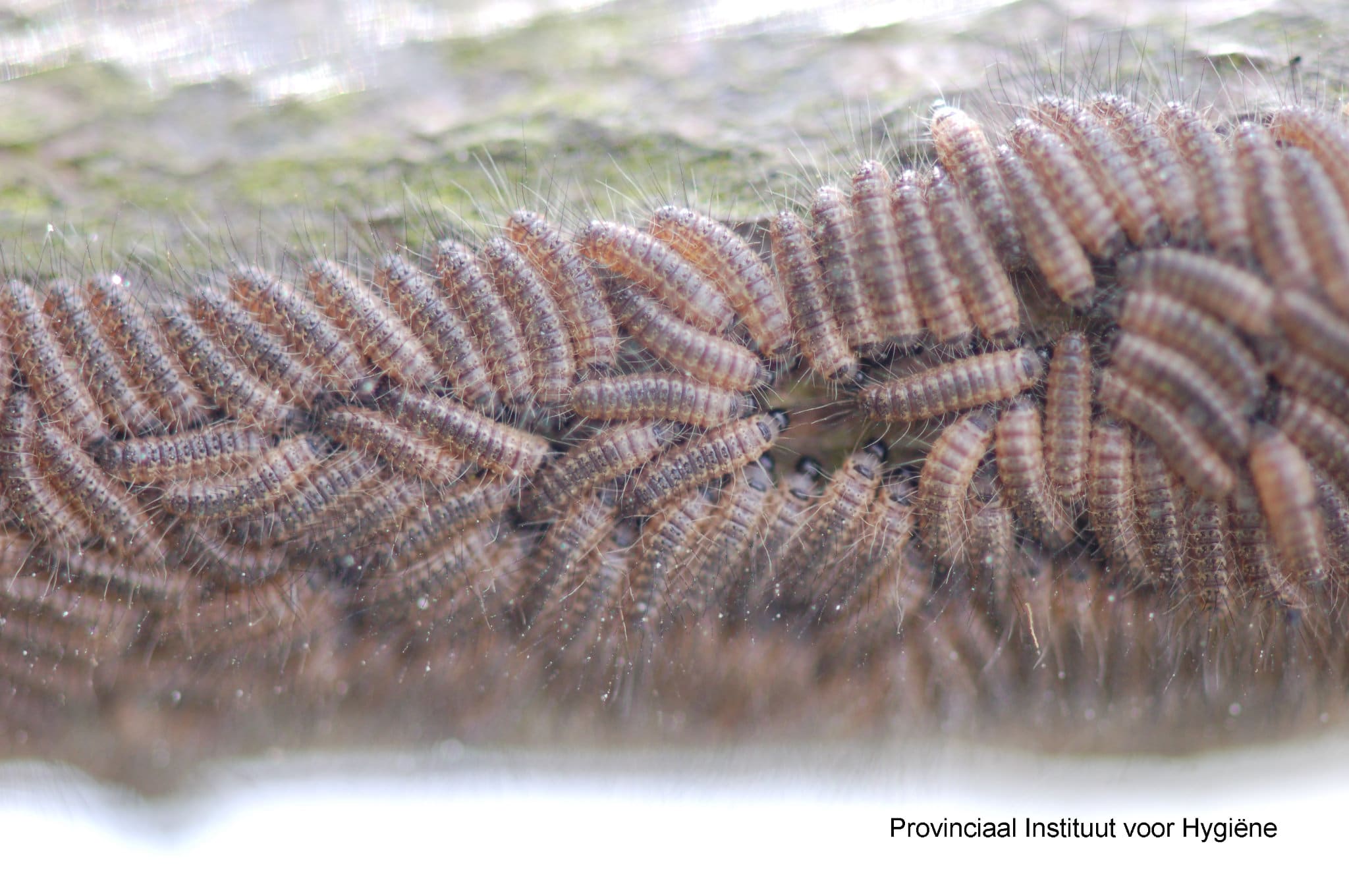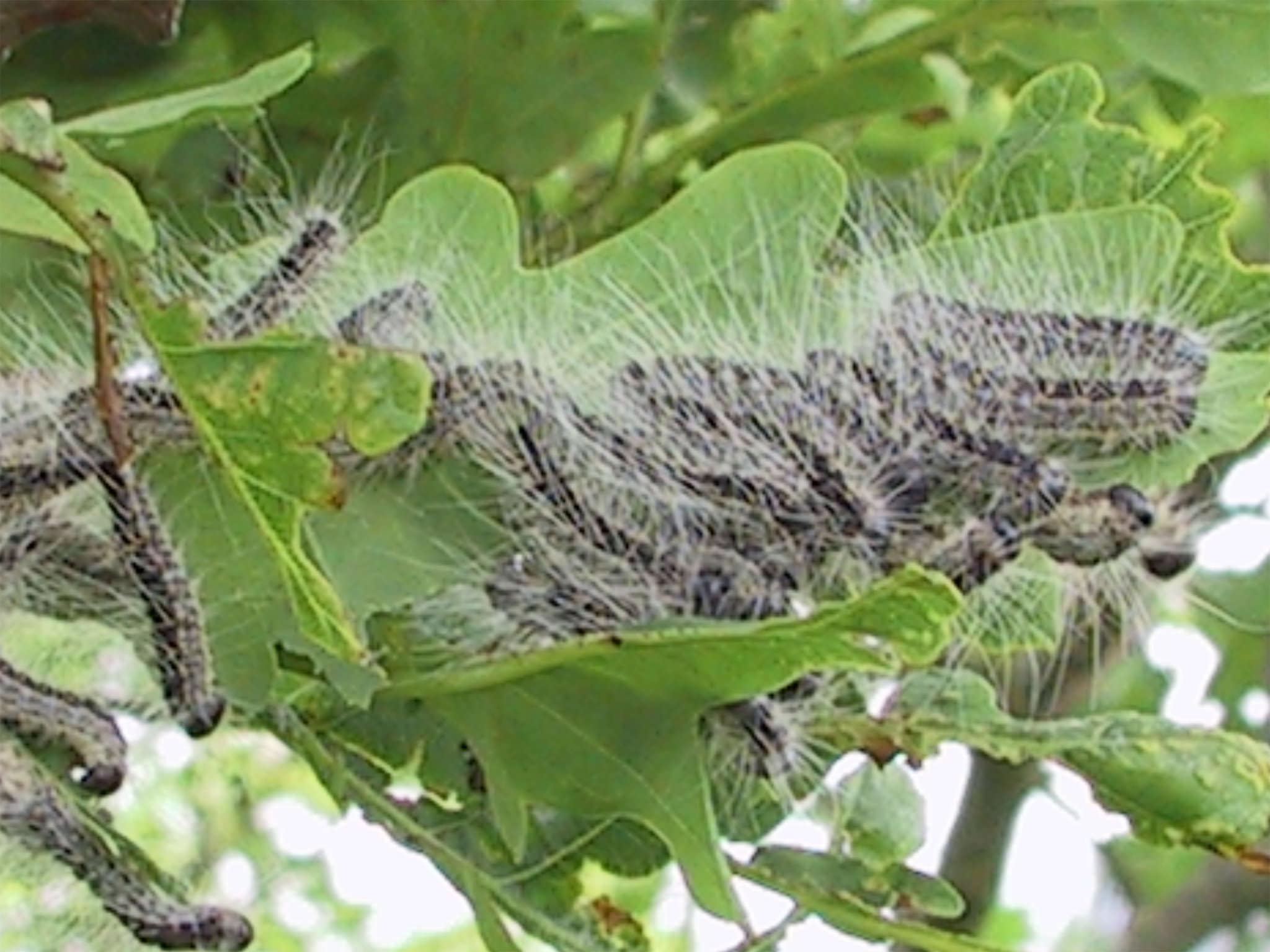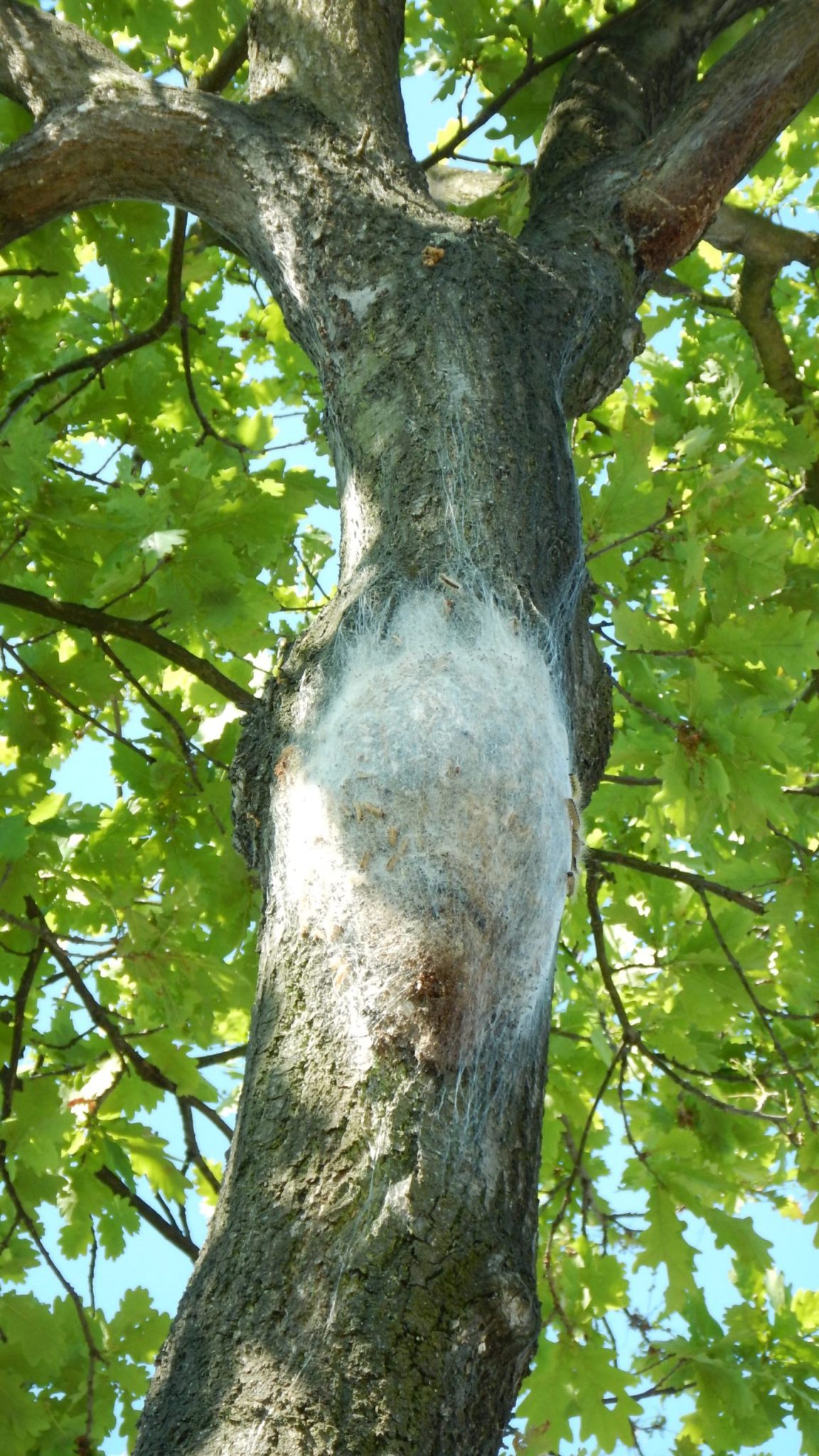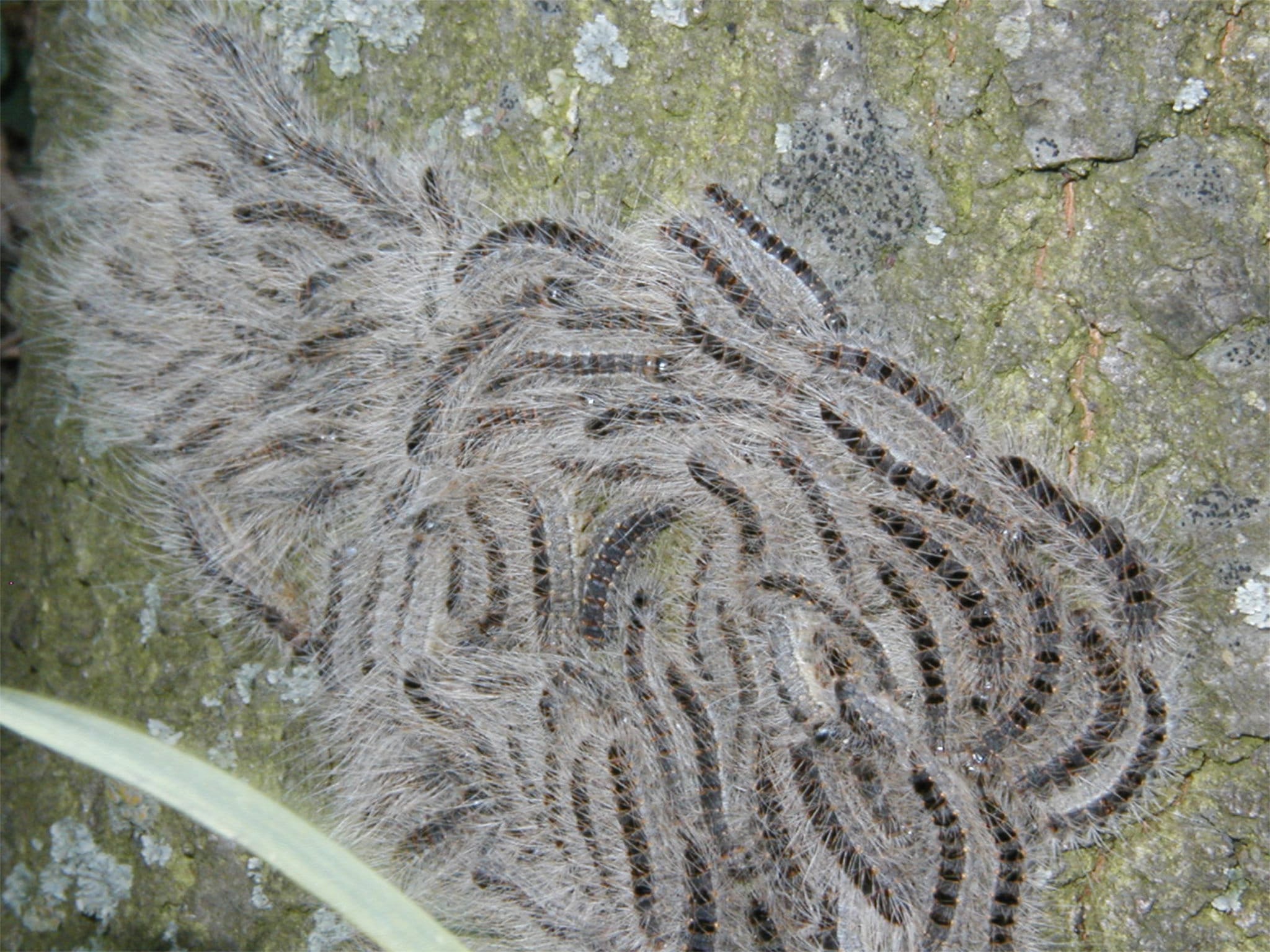Ecology
The oak processionary goes through various phases when developing from egg to caterpillar. An overview of the phases:
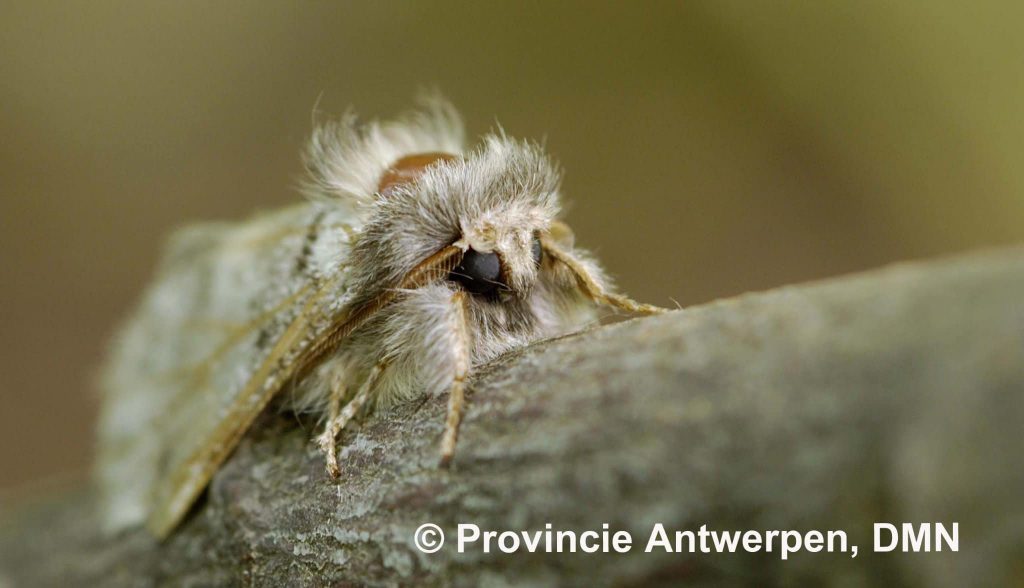
Moth
The oak processionary moth (Thaumetopoea processionea L.) is a nondescript, grey nocturnal moth that flies in the month of August. The moth only lives for one or two days and is just a few centimetres long. The male is more clearly marked and often noticeably smaller than the female. The female’s last segment is home to a group of short, dark hairs. She uses these hairs to cover her eggs.
Eggs
After mating, the females fly to the oaks. Common oaks are the most highly valued trees; caterpillars are rarely seen on other species of oak (e.g. American oak, Pin oak). When there is a shortage of food, the caterpillars may be triggered to use other species of tree, such as beech, birch, black cherry, etc.
In August or September, the females regularly place parcels of between 30 and 200 eggs in the tree tops, usually on the south side of one or two-year old, thin shoots (finger-thickness). This egg sack is long and is made up of multiple rows of eggs next to one another. The eggs are covered with a brown sealant mixed with the hairs from the back of her body. They are therefore well camouflaged and very hard to distinguish from the bark. The eggs then lie dormant for the winter.
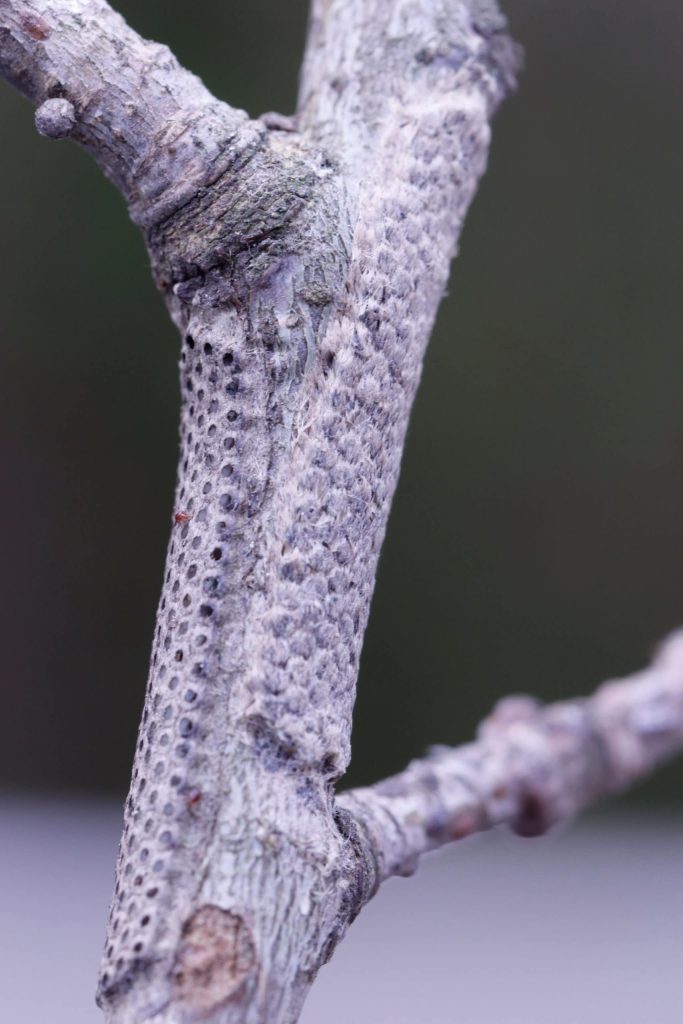
Caterpillars
In mid-April/early May, depending on weather conditions, the orange-coloured, young caterpillars emerge from the eggs. The caterpillars emerge well in advance of the buds. Despite the lack of food, the caterpillars are able to survive this period. They live in tightly-packed groups.
Initially, the caterpillars are around 3 mm long and have long hairs all across their bodies. These hairs, however, are not the microscopic hairs that cause irritation! Before they are fully grown, the caterpillars shed their skin five times. Ultimately, their colour changes to grey, which is lighter at the sides.
From the third larval stage, the caterpillars start to develop the first problematic hairs on the back of the eleventh body segment. These are just a tenth of a millimetre long. During the fourth, fifth and sixth larval stages, they develop more of these hairs until the whole body is covered. A mature caterpillar has around 700,000 of them.
Nests
During the first three larval stages, the caterpillars’ nests are fairly nondescript. They bind a few twigs and leaves together to conceal themselves. The characteristic, bag-like nests, comprising a web of hairs, shed skin and excrement, are only formed after the fifth larval stage. Most of the nests are around the same size as a handball. Some nests, however, can be one and a half metres wide. The caterpillars move out of these nests, where pupation also takes place at a later stage, in long processions.
In July, the caterpillars pupate in a robust cocoon of hairs and other materials and emerge, in August, as a moth.
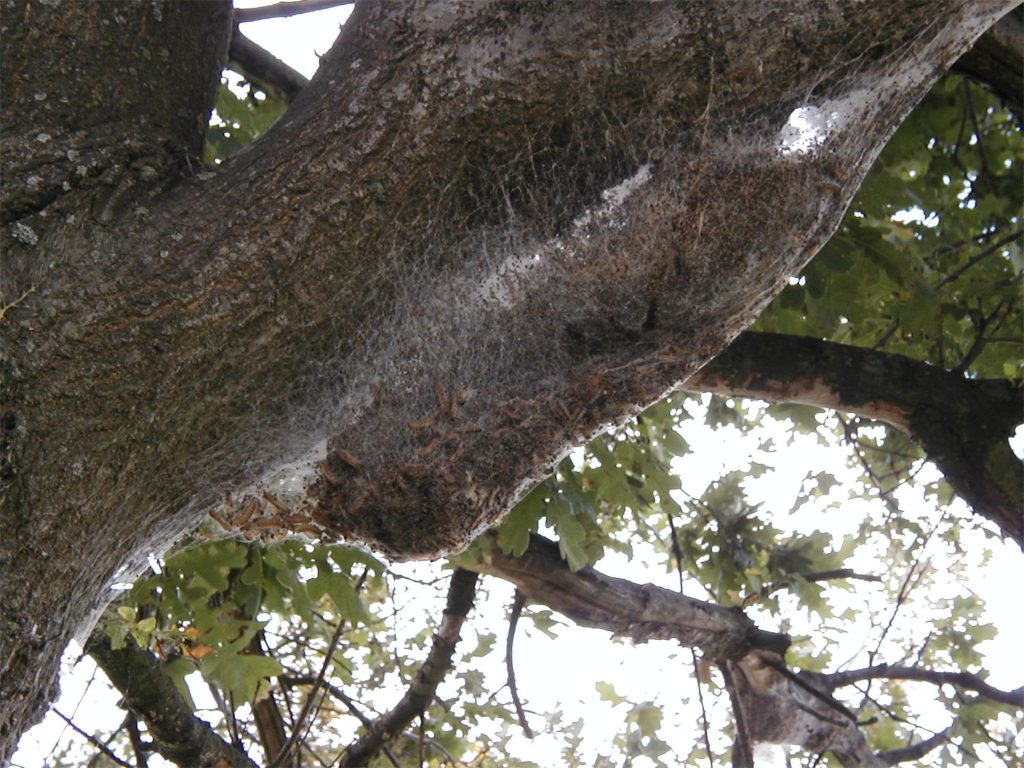
Natural balance
Insect plagues are a normal part of the natural world. In general, nature itself regulates acceptable numbers of each species. Explosive growth, therefore, often results in disease or a lack of food. Thanks to natural enemies, the biological balance is usually restored. The natural enemies of the oak processionary are parasites such as the ichneumon wasp, and predators such as birds, beetles and assassin bugs.
The caterpillars occur in natural and wooded areas but also in urban areas where natural enemies are less prevalent. Where the balance is disrupted, the plague never ends.
